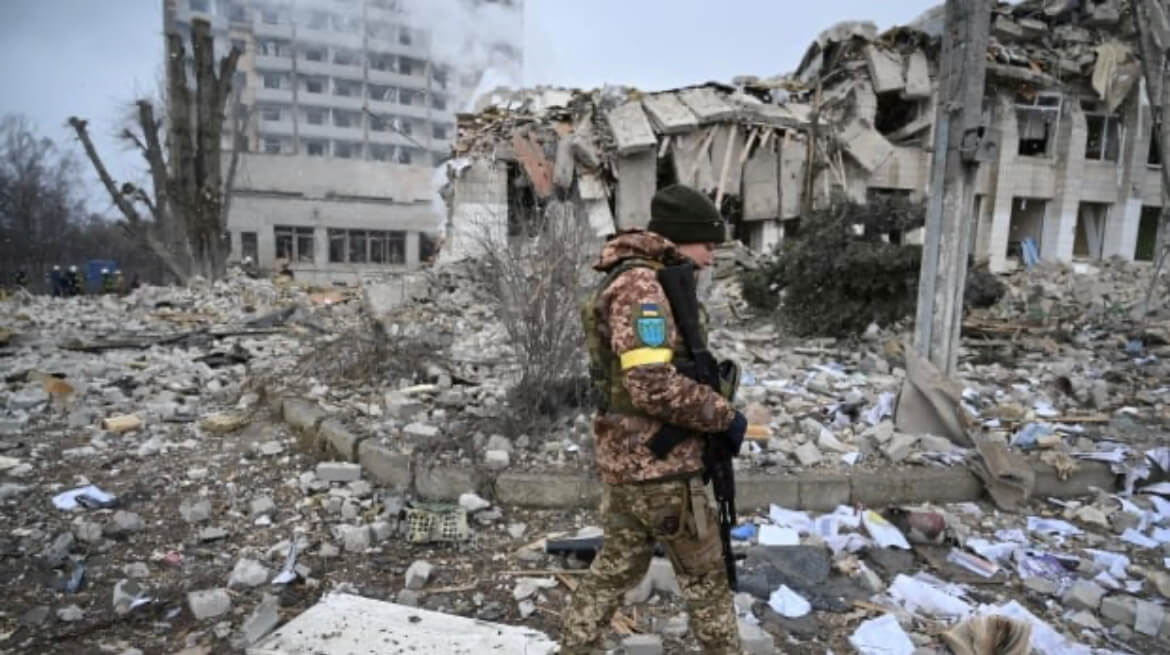UKRAINE: CEASE-FIRE POSSIBLE BUT QUESTIONABLY SUSTAINABLE

BY MARCO VICENZINO
18 March 2022
As Ukrainian neutrality surfaces as a possible foundation for an agreement to end fighting between Russia and Ukraine, its sustainability remains highly questionable.
For now, Putin’s mindset is unlikely to settle for anything less than large swathes of Ukraine’s territory, particularly its east and aiming to land-lock Ukraine – as much as possible – from access to the Black Sea.
Despite encountering fierce Ukrainian resistance on all fronts, Putin has made progress in Ukraine’s south, at least for now.
However, the bottom line is that Putin simply cannot hold ground in all, arguably not even half, of Ukraine. At this point, he will attempt to claim areas where he can find any form of local support or deliberately depopulate cities and towns through intentionally targeting innocent civilians.
Through relentlessness and perseverance, Ukrainians are trying to hold their ground and buy time through fierce resistance with the aim of grinding down Putin.
The more Ukrainians resist, the greater the stalemate, the stronger President Zelensky’s negotiating position, and the more difficult it becomes for Putin to extricate from what increasingly appears a quagmire.
However, the greater the stalemate, the more Putin’s indiscriminate bombing and destruction of Ukrainian cities and population centers. Putin aims to use the high civilian body-count as leverage at the negotiating table and break the Ukrainian will to fight. However, it presently seems to be having the opposite effect, that is, actually strengthening Ukrainian resolve and western unity in support of Ukraine.
On the home front, Putin still retains popular support. The question becomes for how long, particularly when the full impact of western sanctions is felt by ordinary citizens and Russia becomes increasingly disconnected and isolated from the rest of the world, except from other repressive regimes such as China and Iran.
For now, the Russian government has been able to effectively control the narrative through strict control of domestic media. However, as the conflict escalates so will the body bags of dead Russian soldiers returning home. According to some western estimates, although unconfirmed, there have been up to 7,000 Russian soldiers killed in less than a month since Putin’s invasion began. This begs the question: how long is this sustainable before a public backlash.
In theory, each side will need to claim some sort of face-saving exit to end the conflict. In practice, Russia’s overwhelming firepower in destroying Ukraine’s cities and towns could still eventually force a cease-fire. However, this will not be due to Russia’s military prowess on the battlefield but Putin’s deliberate targeting of innocent civilians – and its catastrophic consequences.
Putin would inevitably claim success, but would likely prove a Pyrrhic victory at best – particularly when considering the price paid and what was actually achieved.
Furthermore, the longer the conflict continues, the higher the risks for spillover into NATO soil triggering a wider war in Europe, and potentially a chain reaction of disastrous events beyond.
